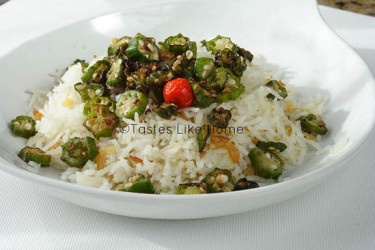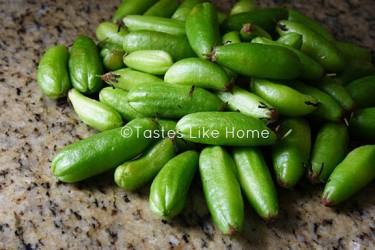Hi Everyone,
We are people who are at once sophisticated and simple. When it comes to our food, we like to tell it like it is. We don’t engage in no lotta long talk, when we name our food, you know exactly what you are getting.
What goes into naming a dish?
The name of a dish/food can be influenced or be determined based on the major ingredient or ingredients used, or the method of preparation. Dishes can and have been named after places and people too. For example, French toast, Dijon mustard, Philly Cheesesteak sandwich, Margherita pizza – named for Queen Margherita of Savoy, who was presented with the pizza in the colours of the Italian flag on a trip to Naples in 1889. Oh Henry! The candy bar, introduced by the Williamson Candy Company in Chicago, 1920, was named for a young man who frequented the company store and was often commandeered to do odd jobs with that call – Oh Henry! It’s not just food, but many beverages are named after places and people – Thai Ice tea, Irish coffee, Manhattan and Shirley Temple among others. We have our own too such as Buxton Spice (mango), Calcutta tomato salad and Curried Hassar à la Corentyne. Can you think of others?
 What I like about us naming many of our foods is that there is a certain degree of frankness.
What I like about us naming many of our foods is that there is a certain degree of frankness.
Sweet Rice is also known as kheer and rice pudding but why be overly fussy. It is rice cooked with milk, spices and sugar all resulting in the rice being sweet. The name of the dish is determined by its distinct taste – sweet. You know what you are eating.
Chicken ‘n de Ruff – sure it’s fried chicken but man, the crust is crisp, and uneven. In Guyanese parlance it is ruff (rough). This name is determined by the texture.
Boil ‘n Fry – whether it is cassava, plantains, sweet potatoes, breadfruit or any other ground provision, the name of this very popular dish is determined by the method used in cooking the ingredients. The provisions are first boiled, literally and then pan-fried in very little oil with fresh herbs and aromatics. In a Guyanese context ‘fried’ for us when talking about vegetables and things like root vegetables (ground provisions) is not about food cooked in lots of oil, it is about cooking with a style that allows the food to be lightly toasted using very little oil in a pan (such as a karahi).
On the topic of ‘boil ‘n fry’, there are times when we make differentiations. For example, if someone simply says that they cooked a ‘boil ‘n fry’ it means they cooked 2 or a combination of provisions. However, in terms of that frankness, we would specify that we have made boil ‘n fry cassava, plantains etc.
Roti – for us roti is not a catchall phrase. We like to differentiate so that you know what you are getting or eating. So we say, oil/paratha roti, sadha roti, potato roti, dhal puri (not to be confused with puri) dosti roti etc. The names are determined by the style of roti and ingredients.

Bakes is another area of distinction for us and this time I do not just mean us Guyanese. You have fry bakes, roast bakes, flat bakes, cornmeal bakes, cassava bakes, pot bakes and so on. You will notice that from the preceding list, the method of cooking or the predominant ingredient determines the names. As we travel through the region you’ll find Vincy bakes, Lucian bakes, Bajan bakes, and other types of bakes going by the name of Johnny Cakes.
Shine Rice – oh gosh, you got to love we! The rice is cooked in coconut milk and when it is finished cooking the rice is glossy and shine from the oil in the coconut milk. So you know what? Is shine rice, a name determined by it looks. When sunlight hits it, you might have to shade your eyes. I had to keep adjusting the shutter speed and aperture when I was taking photographs of the shine rice (laugh).
Souree – while this highly acidic fruit is known elsewhere as bilimbi, you and I both know that it sour like (bleep!) so let’s not fool around, it’s sour-ee. It’s a name determined solely on taste. Speaking of souree, we cannot forget Sour! Whether it is tamarind, mango, golden apple or souree, once it’s green and therefore acidic, when cooked and seasoned with salt and pepper, it’s sour.
Limewater (aka swank) – the people outside have their lemonades and limeades but we have our limewater. Just saying the name makes me laugh thinking that
people unbeknownst to us would be thinking of water with squeezed limes. But it is so much more than the water and limes isn’t it?

Last one for now, Chicken Foot! The first time I heard about this was at Sacred Heart Primary School. I’d hear my peers crowded around the L-shaped ledge of the school’s tuck shop counter shouting that they want 25-cents and 50-cents chicken foot! Me, at that time, never having eaten chicken foot and having no idea what it was, literally thought that it was the real feet of chicken. I had only ever seen but not touched, much less eaten real chicken feet. “Cynthia, you want chicken foot?” asked one of my friends who was closer to the counter. I waffled for a few moments and then nodded. “You want sour?” she asked. I nodded again as I handed her my bob (25-cent piece). As my friend approached me, extending one of her hands with a piece of parchment paper with something, I was a little baffled, where was the chicken foot I wondered. However, I did not want to seem foolish so I took the little parcel from her hand. Nestled in the middle of the paper was a neat pile of squiggly fried things with some sour on the side.
We strolled back to our building and all the while I kept thinking, so this is chicken foot! It is not what I thought it was at all. I bit into the crisp fried seasoned dough and it was love at first bite. Dipped into the sour, it was even better. I later found out it was called chicken foot because the long thin yellow/tanned crispy things resembled the long individual finger-like feet of chickens.
The bottom line in naming any dish is this – it should sound delicious. It should make you say, “Ouuu, I’ll have that, or I will try that.” I’m not sure how we are faring in this regard but you know what, I won’t trade our practicality in naming dishes, it is very much us, and it’s how we like it. Some might argue that we have to change it up for tourists and visitors, not really, use it as an opportunity to educate and inform, explain the food/dish while at the same time providing some context for what it is that they will be eating. I bet you, they will remember that meal long after they have left our shores. People travel for many reasons, one among which is to experience the food culture of place.
Cynthia
Cynthia@tasteslikehome.org
www.tasteslikehome.org








